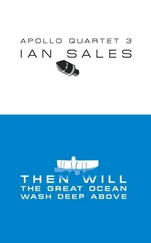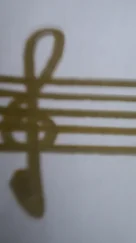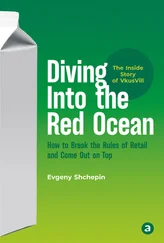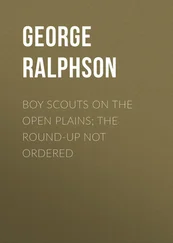Joseph J. Torres - Life in the Open Ocean
Здесь есть возможность читать онлайн «Joseph J. Torres - Life in the Open Ocean» — ознакомительный отрывок электронной книги совершенно бесплатно, а после прочтения отрывка купить полную версию. В некоторых случаях можно слушать аудио, скачать через торрент в формате fb2 и присутствует краткое содержание. Жанр: unrecognised, на английском языке. Описание произведения, (предисловие) а так же отзывы посетителей доступны на портале библиотеки ЛибКат.
- Название:Life in the Open Ocean
- Автор:
- Жанр:
- Год:неизвестен
- ISBN:нет данных
- Рейтинг книги:5 / 5. Голосов: 1
-
Избранное:Добавить в избранное
- Отзывы:
-
Ваша оценка:
- 100
- 1
- 2
- 3
- 4
- 5
Life in the Open Ocean: краткое содержание, описание и аннотация
Предлагаем к чтению аннотацию, описание, краткое содержание или предисловие (зависит от того, что написал сам автор книги «Life in the Open Ocean»). Если вы не нашли необходимую информацию о книге — напишите в комментариях, мы постараемся отыскать её.
Life in the Open Ocean: The Biology of Pelagic Species
Life in the Open Ocean: The Biology of Pelagic Species
Life in the Open Ocean — читать онлайн ознакомительный отрывок
Ниже представлен текст книги, разбитый по страницам. Система сохранения места последней прочитанной страницы, позволяет с удобством читать онлайн бесплатно книгу «Life in the Open Ocean», без необходимости каждый раз заново искать на чём Вы остановились. Поставьте закладку, и сможете в любой момент перейти на страницу, на которой закончили чтение.
Интервал:
Закладка:
68 Smith, D.A., Hofmann, E.E., Klinck, J.M., and Lascara, C.M. (1999). Hydrography and circulation of the West Antarctic Peninsula continental shelf. Deep Sea Research, Part I 46: 925–949.
69 Somero, G.N. (1975). The role of isozymes in adaptation to varying temperatures. In: Isozymes II: Physiological Function (ed. C.L. Markert). New York: Academic Press.
70 Somero, G.N. and Siebenaller, J.F. (1979). Inefficient lactate dehydrogenases of deep‐sea fishes. Nature 282: 100–102.
71 Spyropoulos (1957). Response of single nerve fibers at different hydrostatic pressures. American Journal of Physiology 189: 214–218.
72 Sverdrup, H.U., Johnson, M.W., and Fleming, R.H. (1942). The Oceans, Their Physics, Chemistry, and General Biology. Englewood Cliffs: Prentice‐Hall.
73 Teal, J.M. (1971). Pressure effects of the respiration of vertically migrating decapod Crustacea. American Zoologist 11: 571–576.
74 Teal, J.M. and Carey, F.G. (1967). Effects of pressure and temperature on the respiration of euphausiids. Deep‐Sea Research 14: 725–733.
75 Torres, J.J. and Somero, G.N. (1988). Metabolism, enzymic activities, and cold adaptation in Antarctic mesopelagic fishes. Marine Biology 98: 169–180.
76 Torres, J.J., Belman, B.W., and Childress, J.J. (1979). Oxygen consumption rates of midwater fishes as a function of depth of occurrence. Deep‐Sea Research 26: 185–197.
77 Torres, J.J., Aarset, A.V., Donnelly, J. et al. (1994). Metabolism of Antarctic micronektonic Crustacea as a function of depth of occurrence and season. Marine Ecology Progress Series 113: 207–219.
78 Vinogradov, M.E. (1970). Vertical Distribution of the Oceanic Zooplankton. Jerusalem: Israel program for scientific translations.
79 Wells, M.J. and Wells, J. (1983). The circulatory response to acute hypoxia in Octopus. Journal of Experimental Biology 104: 59–71.
80 Wells, M.J., Wells, J., and O’dor, R.K. (1992). Life at low oxygen tensions: the behavior and physiology of Nautilus pompilius and the biology of extinct forms. Journal of the Marine Biological Association of the United Kingdom 72: 313–328.
81 Winberg, G.G. (1956). Rate of Metabolism and Food Requirements of Fishes. Dartmouth, Nova Scotia: Fisheries Research Board of Canada.
82 Wishner, K.F., Gowing, M.M., and Gelfman, C. (2000). Living in suboxia: ecology of an Arabian Sea copepod. Limnology and Oceanography 45: 1576–1593.
83 Withers, P.C. (1992). Comparative Animal Physiology. Orlando: Saunders.
84 Wohlschlag, D.E. (1960). Metabolism of an Antarctic fish and the phenomenon of cold adaptation. Ecology 41: 287–292.
3 The Cnidaria
Introduction
The Cnidaria, or stinging jellies, include a bewildering array of groups ranging from aquarium favorites such as anemones to the infamous Portuguese man‐o‐war and to reef‐building corals, deep‐dwelling sea pansies, and sea pens. The focus in this book is the cnidarians that are large floaters and weak swimmers: the jellyfishes (the medusae) and the siphonophores. Both are important groups within the polyphyletic assemblage collectively known as the macrozooplankton. In turn, macrozooplanktonic species are important elements of the pelagic community.
The pelagic Cnidaria are particularly confusing because there are two types of medusae: the smaller and less complex hydromedusae and the larger scyphomedusae. Inshore, the scyphomedusae are far more noticeable to the casual observer and are seasonally well represented by species such as the moon jelly Aurelia and the scourge of Atlantic beaches, the sea nettle Chrysaora . Offshore, in the blue waters of the pelagic realm, the hydromedusae dominate numerically. Adding to the confusion is the fact that many, but not all, of the hydromedusae and scyphomedusae alternate generations from a sedentary, anemone‐like, polyp stage to a swimming medusoid form. The alternation of generations is sometimes termed “metagenesis.” It was the alternation of generations that captured the imagination of famous natural philosophers such as Cuvier, Lamarck, and especially Ernst Haeckel, who made siphonophores one of his favorite subjects for study.
Siphonophores are unfamiliar to most people not well acquainted with the open ocean because the animals are found predominantly offshore and are very delicate. Therefore, they are difficult to preserve or to view intact after capture. As a consequence, siphonophores have received limited study though they are common predators in the open ocean and especially in the deep sea.
Classification
History
The sedentary nature of many of the Cnidaria (think anemone, not jellyfish) made their position within the animal kingdom difficult to decipher for the early natural philosophers, who considered them something somewhere between an animal and a plant. Aristotle called them Acalephae or Cnidae (from the Greek: akalephe = nettle; cnidos = thread) (Hyman 1940) and placed them with a variety of other soft‐bodied animals in with the Zoophyta (from the Greek: zoon = animal, phyton = plant). Researchers in the eighteenth century recognized the animal nature of cnidarian polyps, leading the way for natural philosophers of the nineteenth century, Linnaeus, Lamarck, and Cuvier, to place the cnidarians among the animals in their own classification systems, among either the Radiata, recognizing the importance of radial symmetry, or Zoophyta.
Just as happens today, the natural philosophers of the nineteenth century had differences of opinion on the group relationships. Lamarck’s system included the medusoid Cnidaria and echinoderms (starfish) in his Radiata, with the polypoid cnidarians simply called the Polyps. In 1829, Sars showed that polyps and medusae were different life stages of the same animal, not separate groups. Not quite 20 years later, Leuckart and Frey (1847) separated the two largest radially symmetrical groups, the echinoderms and the cnidarians, into two groups: the coelenterates and the echinoderms. Leuckart coined the term Coelenterata from the Greek words for body cavity (koilos) and intestine (enteron), noting that the only body cavity in the cnidaria was the intestine (Hyman 1940). Leuckart included the sponges and ctenophores within his Coelenterata. It was up to Hatschek (1888) to separate Leuckart’s Coelenterata into the three phyla we recognize today: the Spongiaria (Porifera), the Cnidaria, and the Ctenophora. The term Coelenterata is still extensively used today, most commonly as a synonym for the Cnidaria but sometimes as a way of combining the ctenophores and cnidarians into a single taxon.
Classification Schemes
Classification within the Cnidaria is constantly evolving. While there is consensus on what the different groups within the Cnidaria are, there is considerably less agreement on rank and position within the systematic hierarchy. It is important to recognize that molecular methodologies have opened a new and rapidly evolving way of classifying species at all levels of the taxonomic hierarchy. The half‐life of any taxonomic scheme will likely be quite short for some time to come, and the only way to keep up will be with web‐based systems such as the world register of marine species (WoRMS) or with taxon‐specific sites. The scheme shown below is that of Brusca et al. (2016). Brusca et al. divide the Cnidaria into three subphyla: the Anthozoa, Medusozoa (cf. Bouillon 1999), and the parasitic Myxozoa. The Anthozoa are devoid of the medusa phase, and in the Medusozoa the medusa phase is an important phase of the life cycle. The Anthozoa include one class, the Anthozoa, and two subclasses: the Hexacorallia and Octocorallia. All are benthic forms, with the anemones, black corals, and stony corals included in the subclass Hexacorallia, and the gorgonians, soft corals, sea pens and sea pansies and organ pipe corals included in the subclass Octocorallia.
Читать дальшеИнтервал:
Закладка:
Похожие книги на «Life in the Open Ocean»
Представляем Вашему вниманию похожие книги на «Life in the Open Ocean» списком для выбора. Мы отобрали схожую по названию и смыслу литературу в надежде предоставить читателям больше вариантов отыскать новые, интересные, ещё непрочитанные произведения.
Обсуждение, отзывы о книге «Life in the Open Ocean» и просто собственные мнения читателей. Оставьте ваши комментарии, напишите, что Вы думаете о произведении, его смысле или главных героях. Укажите что конкретно понравилось, а что нет, и почему Вы так считаете.












